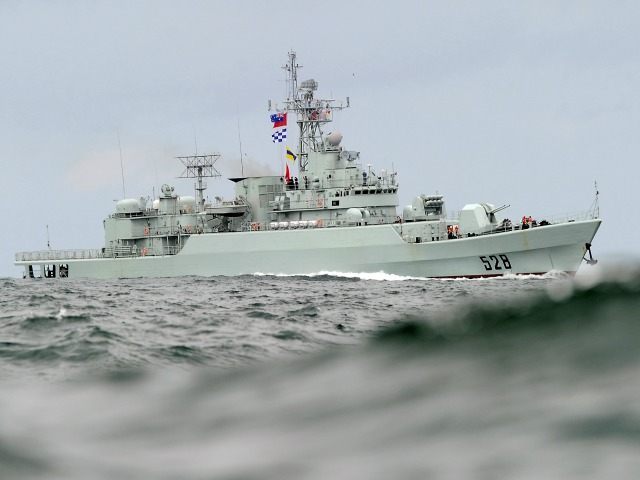Japan is alleging that an armed Chinese vessel violated its sovereign waters near the disputed Senkaku Islands on Saturday, lodging a formal protest with the Chinese government.
While Bloomberg notes this is one of dozens of similar instances of China trespassing into Japanese waters in the East China Sea – the 139th incident since 2012 – it is the first involving an armed Chinese government ship, believed to have been carrying an auto-cannon and four gun turrets. Officials had spotted the same vessel near the area on December 22, but only on December 26 did it appear to openly violate Japanese sovereignty. The ship was one in a set of three that had transgressed into Japanese waters, though the only one believed to be armed.
Upon identifying the ships, the Japanese coast guard warned that they were in Japanese waters and demanded they leave. The ships’ officers reportedly responded by accusing the Japanese coast guard of operating in Chinese waters and telling them to leave as soon as possible. The Chinese ships did eventually evacuate the area.
“We don’t know China’s intentions, but our response will remain unchanged, and we’ll act calmly and decisively for Japan’s safety,” spokesman Yosuke Watanuki said of the incident.
While the Chinese government has remained quiet on the incident, Chinese state-controlled media has condemned Japan for claiming parts of the East China Sea traditionally belonging to Japan as its own. In an editorial this week, the Chinese People’s Daily accuses the Japanese government of waging a “propaganda war” against China regarding the Senkaku Islands, which China calls the Diaoyu. Regarding this particular violation of Japan’s sovereignty, the editorial claims that “both China and Japan have regularly dispatched patrol vessels to sail around the islands” and that it is absurd to expect Chinese vessels not to be armed in disputed territory. “China has little interest in fighting a propaganda war with Japan over the Diaoyu Islands,” the column notes, though it encourages the Chinese government to “not only make strides in conducting patrols around the islands, but also think seriously of responding to the propaganda campaign of Japan.”
China attempted to take full control of the Senkaku Islands – which are unpopulated but resource-rich – in November 2013 by establishing an “Air Defense Identification Zone” (ADIZ) over the area. Such a move would require any non-Chinese aircraft in the area to identify itself to the Chinese military. It took little time for the United States to violate the ADIZ, leading the way for Japan to do the same and, as the Japan Times explains, China was forced to “quietly stop actively enforcing it.” Since then, Japan has deployed ground troops to neighboring islands and reinforced its military position there.
China has established a pattern of seeking full control over maritime properties that have traditionally belonged to its neighbors in the past three years. In addition to exercises in the East China Sea, it has expanded operations in contested territory in the South China Sea, challenging the territorial claims of Vietnam, the Philippines, Taiwan, Brunei, and Malaysia. It has been particularly active in the Spratly Islands, disputed by the Philippines, where China has built at least one airplane landing strip and a number of artificial islands. Satellite images suggest China has begun building up to three more landing strips in the area, quadrupling its military presence there.
In addition to expanding its construction projects in the region, which China insists are for civilian purposes only, the Chinese government has threatened neighboring countries to stay out of the South China Sea. In an editorial in the state-run Global Times, editors threatened Australia with the claim that China would not hesitate to blow one of its aircraft out of the sky if it flew too close to the Spratly Islands.
China is also contesting waters in the Yellow Sea that have traditionally belonged to South Korea. Regarding an overlapping exclusive economic zone in the area, Beijing has claimed territory well within the UN-sanctioned 200 nautical mile limit in which Seoul claims exclusive rights, citing a larger population and greater economic need.

COMMENTS
Please let us know if you're having issues with commenting.